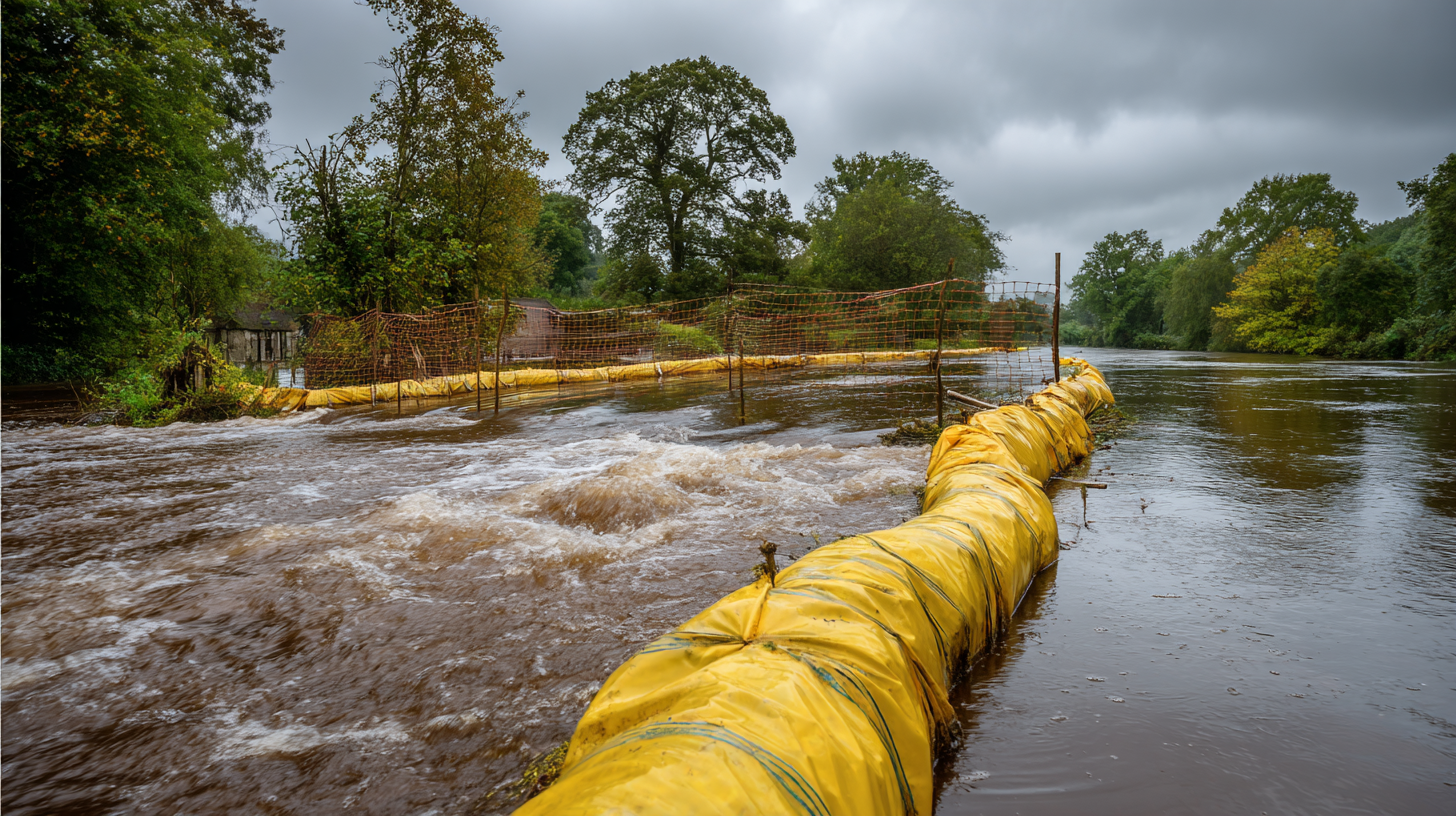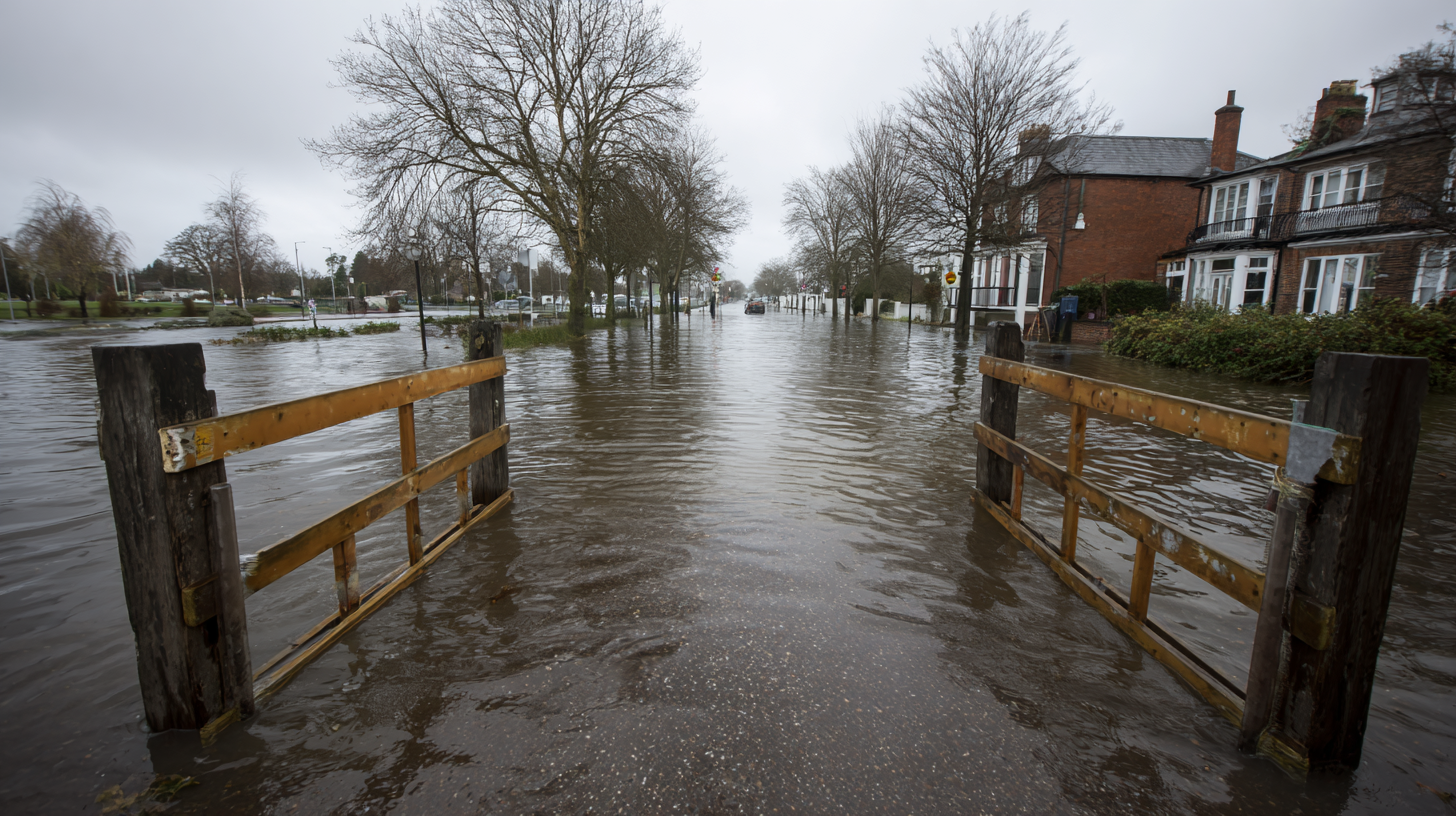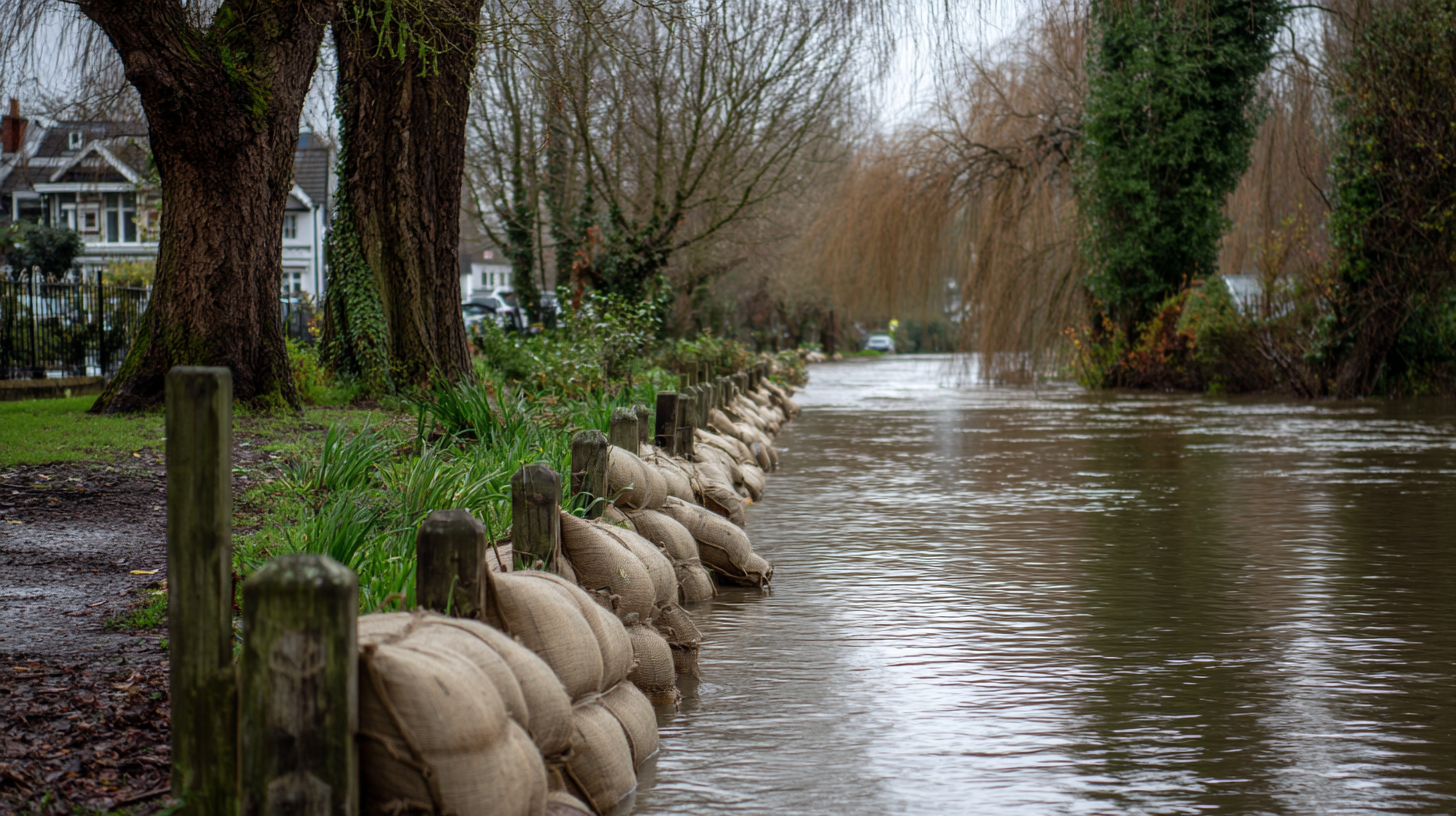As climate change continues to escalate the frequency and intensity of flooding events, homeowners and businesses are increasingly seeking effective solutions to mitigate water damage. One such solution that has gained prominence is the water filled flood barrier, which offers an innovative and flexible approach to flood defense. According to a recent report from the National Flood Insurance Program, approximately 40% of small businesses never reopen after a disaster, highlighting the urgent need for proactive measures in flood-prone areas.

Water filled flood barriers provide a cost-effective and easy-to-deploy option for safeguarding properties against rising water levels. Their ability to adapt to various environments and their reusability make them a preferred choice among property owners looking to enhance their flood resilience. In this ultimate guide, we will explore the features, benefits, and installation processes of water filled flood barriers, empowering you with the knowledge to protect your home or business effectively.
Water filled flood barriers have emerged as an effective solution for homeowners and businesses seeking to protect their properties from the increasing threat of flooding, especially in urban areas experiencing rapid changes due to climate variability. These barriers offer a unique blend of key features, including ease of deployment, portability, and reusability, making them ideal for both temporary and permanent flood management strategies. As urban green spaces and infrastructure continue to be challenged by severe weather events, the use of these barriers can significantly mitigate the risks associated with stormwater runoff and enhance overall flood resilience.
Moreover, understanding the benefits of water filled flood barriers is crucial in a landscape where flooding and drought coexist, complicating disaster management efforts. By incorporating such barriers into disaster preparedness plans, communities can create a more sustainable approach to managing extreme weather impacts. The adaptability of these barriers not only protects properties but also supports broader environmental goals by minimizing disruption to natural flood plains and promoting green infrastructure initiatives. This holistic view on flood protection contributes to a safer and more resilient urban living environment.
When evaluating flood defense solutions, water-filled barriers present a compelling alternative to traditional methods such as sandbags or earth berms. According to a report by the National Flood Insurance Program (NFIP), property owners in flood-prone areas spend an average of $144,000 on flood-related repairs over their lifetime. Water-filled barriers, which are often more cost-effective, can reduce this expense significantly. These barriers have been shown to offer higher efficiency, as they can be deployed quickly and adapted to various terrain types, making them suitable for both residential and commercial applications.
In research conducted by the Flood Research Centre, it was found that water-filled barriers can provide up to 98% effectiveness in flood prevention compared to only 70% for traditional sandbags. Moreover, the initial investment in water-filled barriers can be recouped after just one flood event, highlighting their long-term financial advantages. As flood risks escalate due to climate change, homeowners and businesses should consider the balance of effectiveness and cost when selecting flood defense solutions. Investing in innovative technologies like water-filled barriers could ensure better protection and potentially lower insurance premiums in the long run.
| Flood Defense Type | Effectiveness (1-10) | Average Cost (per unit) | Ease of Installation | Maintenance Level |
|---|---|---|---|---|
| Water Filled Barriers | 8 | $50 | Easy | Low |
| Sandbags | 6 | $25 | Moderate | High |
| Permanent Barriers | 9 | $5000 | Difficult | Very Low |
| Temporary Dikes | 7 | $200 | Moderate | Medium |
| Inflatable Barriers | 8 | $300 | Easy | Low |
In recent years, water-filled flood barriers have become increasingly popular among homeowners and businesses alike, providing an effective solution to combat flooding. A striking example can be found in a community devastated by heavy rains, where local businesses implemented these barriers to protect their storefronts. By strategically placing the water-filled barriers around entrances and vulnerable areas, they were able to prevent significant water damage, allowing them to continue operations without interruption.

Another success story comes from a residential neighborhood prone to seasonal flooding. One family, concerned about the safety of their home, decided to invest in water-filled flood barriers after witnessing the destructive impacts of previous storms. During the next heavy rain event, they set up the barriers along their property line. The results were remarkable; while many neighbors faced flooded basements, this family experienced minimal water intrusion, showcasing the barriers' effectiveness and providing peace of mind during future storms. These real-world applications highlight how versatile and reliable water-filled flood barriers can be for both residential and commercial purposes.
Flooding remains one of the most damaging natural disasters, causing billions in damages each year. According to the National Oceanic and Atmospheric Administration (NOAA), flood-related damages average around $8 billion annually in the United States alone. Water-filled flood barriers have emerged as a practical solution for homeowners and businesses alike, significantly reducing these financial losses. These barriers, filled with water and easily deployable, can effectively redirect water flow and protect properties at risk during heavy rainfall or storm surges.
A study from the Federal Emergency Management Agency (FEMA) indicates that for every dollar spent on mitigation efforts, there is a potential savings of $4 in disaster recovery. Water-filled barriers serve as a cost-effective method to safeguard against floodwaters, potentially saving property owners from extensive repair costs and business interruptions. Moreover, they offer a rapid response solution, allowing communities to prepare for inclement weather efficiently. With floods projected to increase due to climate change, investing in water-filled barriers presents both a proactive measure for risk reduction and a sound financial strategy for minimizing future losses.
This chart illustrates the significant difference in average flood damage costs between properties with no barriers and those equipped with water filled barriers. As indicated, properties without barriers can expect to incur costs averaging around $65,000, while those with barriers manage to limit their damages to approximately $18,000, highlighting the cost-saving potential of these protective measures.
Water filled flood barriers have become an essential tool for homeowners and businesses looking to safeguard their properties against flooding. Proper installation and maintenance are critical for ensuring these barriers perform optimally. According to a report by the American Society of Civil Engineers (ASCE), over $2 trillion in damage occurs annually due to floods, emphasizing the importance of reliable flood protection systems. To ensure longevity, it is recommended to install barriers in accordance with the manufacturer's guidelines, which typically include securing the barriers in a straight line and ensuring they are properly filled with water before deployment.

In addition to correct installation, routine maintenance is crucial. The Federal Emergency Management Agency (FEMA) suggests inspecting water filled barriers regularly for leaks, damages, or structural weaknesses. Maintaining the right water level is also essential; research indicates that barriers need to be at least 80% filled for effective performance, as under-filled barriers may fail under high-pressure water conditions. By prioritizing these installation and maintenance practices, property owners can enhance the effectiveness of their flood barriers, ensuring they remain a steadfast line of defense against the devastation caused by flooding.
Please enter the details to download, thank you
Get in Touch With Us
Please enter the details to download, thank you
Please enter the details to download, thank you
Please enter the details to download, thank you
Please enter the details to download, thank you
Please enter the details to download, thank you
Please enter the details to download, thank you
Please enter the details to download, thank you
Please enter the details to download, thank you
Please enter the details to download, thank you
Please enter the details to download, thank you
Please enter the details to download, thank you
Please enter the details to download, thank you
Please enter the details to download, thank you
Please enter the details to download, thank you
Please enter the details to download, thank you
Please enter the details to download, thank you
Please enter the details to download, thank you
Please enter the details to download, thank you
Please enter the details to download, thank you
Please enter the details to download, thank you
Please enter the details to download, thank you
Please enter the details to download, thank you
Please enter the details to download, thank you
Please enter the details to download, thank you
Please enter the details to download, thank you
Please enter the details to download, thank you
Please enter the details to download, thank you
Please enter the details to download, thank you
Please enter the details to download, thank you
Please enter the details to download, thank you
Please enter the details to download, thank you
Please enter the details to download, thank you
Please enter the details to download, thank you
Please enter the details to download, thank you
Please enter the details to download, thank you
Please enter the details to download, thank you
Please enter the details to download, thank you
Please enter the details to download, thank you
Please enter the details to download, thank you
Please enter the details to download, thank you
Please enter the details to download, thank you
Please enter the details to download, thank you
Please enter the details to download, thank you
Please enter the details to download, thank you
Please enter the details to download, thank you
Please enter the details to download, thank you